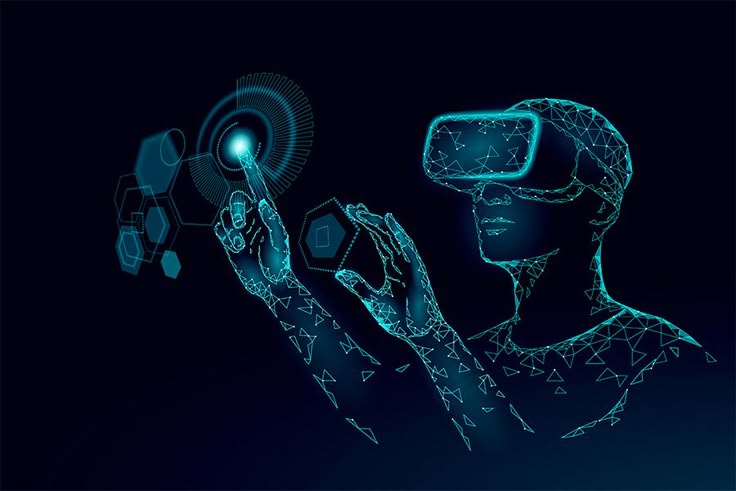The internet, as we know it, has gone through several transformative stages. From the static pages of Web 1.0 to the interactive and social platforms of Web 2.0, we are now entering a new phase known as Web 3.0—or simply, Web3. This new paradigm represents a fundamental shift in how the internet operates, who controls it, and how users interact with digital services. It promises to bring more power to individuals, decentralize control, and offer a more secure and privacy-focused online experience. But what exactly is Web 3.0, and why is it generating so much buzz?
The Evolution: From Web 1.0 to Web 3.0
To understand Web 3.0, it’s important to trace the evolution of the internet:
Web 1.0 (1990s – early 2000s): This was the era of static web pages. Information was mostly read-only, and users were consumers of content rather than participants. Websites were controlled by a few companies or individuals, with little interaction or user-generated content.
Web 2.0 (mid-2000s – present): Characterized by interactivity, collaboration, and user-generated content, Web 2.0 brought us social media platforms, cloud computing, and mobile apps. It enabled users to publish content, share media, and interact online. However, it also led to the centralization of data in the hands of tech giants like Google, Facebook, Amazon, and Twitter, raising concerns about data privacy, censorship, and monopolistic practices.
Web 3.0 (emerging): Web3 envisions a decentralized internet powered by blockchain technology, smart contracts, and cryptocurrencies. It aims to shift control from centralized entities back to individual users, enabling peer-to-peer interactions, ownership of digital assets, and trustless transactions.
Key Features of Web 3.0
1. Decentralization: Unlike Web 2.0, where data is stored in centralized servers, Web3 uses blockchain technology to distribute data across networks. This makes the system more resilient to censorship and reduces dependency on any single authority.
2. Blockchain and Cryptocurrencies: At the heart of Web3 lies blockchain—a distributed ledger technology that ensures transparency and security. Cryptocurrencies like Ethereum, Bitcoin, and Solana serve as the economic layer of Web3, enabling value transfer and incentivizing network participation.
3. Ownership and Digital Identity: Web3 gives users control over their digital identities and data. Using technologies like decentralized identifiers (DIDs) and self-sovereign identity (SSI), users can authenticate themselves without relying on third-party platforms.
4. Smart Contracts: These are self-executing contracts with the terms directly written into code. They run on blockchain networks and facilitate trustless, automated interactions between users—everything from financial transactions to voting systems.
5. Interoperability and Open Standards: Web3 encourages open-source protocols and APIs, allowing various platforms to interact seamlessly. This reduces platform lock-in and promotes innovation.
6. Tokenization: Assets can be represented digitally on the blockchain, whether it’s art (as NFTs), real estate, or intellectual property. Tokenization democratizes access to assets and creates new economic models.
Use Cases of Web 3.0
Web3 is not just theoretical; it’s already being implemented in various domains:
Decentralized Finance (DeFi): DeFi platforms like Uniswap, Aave, and Compound allow users to lend, borrow, and trade assets without intermediaries, challenging traditional banking systems.
Non-Fungible Tokens (NFTs): NFTs have revolutionized digital ownership, especially in art, gaming, and entertainment. Platforms like OpenSea and Rarible enable artists to sell digital art directly to collectors.
Decentralized Autonomous Organizations (DAOs): DAOs are governance structures that operate without centralized leadership. Decisions are made through token-holder voting, creating a more democratic approach to organization management.
Decentralized Social Media: Projects like Lens Protocol and Farcaster are developing alternatives to mainstream social media platforms where users own their data and monetize content directly.
Supply Chain Management: Web3 technologies can enhance transparency and traceability in supply chains, ensuring authenticity and ethical sourcing of products.
Challenges and Criticisms
Despite its promise, Web3 is not without its challenges:
Scalability: Blockchain networks often face scalability issues, with slower transaction speeds and higher costs compared to centralized systems. Solutions like Layer 2 protocols and sharding are being developed to address these.
User Experience: Many Web3 applications are still complex and not user-friendly. Wallet management, key security, and understanding blockchain mechanics pose hurdles for mainstream adoption.
Regulation and Legal Uncertainty: The decentralized nature of Web3 creates legal gray areas. Governments around the world are grappling with how to regulate cryptocurrencies, NFTs, and DeFi platforms without stifling innovation.
Energy Consumption: Some blockchain networks, especially those using Proof of Work (PoW), consume large amounts of energy. While many are transitioning to more eco-friendly consensus mechanisms like Proof of Stake (PoS), sustainability remains a concern.
Speculation and Scams: The nascent nature of Web3 has attracted speculation and bad actors. Rug pulls, pump-and-dump schemes, and unverified projects can harm users and damage public trust.
The Road Ahead
Web 3.0 is still in its early stages, and its final form is yet to be determined. While many of its applications are experimental, the underlying principles of decentralization, transparency, and user empowerment are likely to shape the future of the internet.
Major tech companies, venture capital firms, and developers are investing heavily in Web3 infrastructure, signaling confidence in its potential. At the same time, educators, policy makers, and technologists are working to ensure that Web3 evolves in a way that is inclusive, secure, and beneficial to all users.
Conclusion
Web 3.0 represents more than just a technological shift—it is a movement toward a more open, equitable, and user-centric internet. While challenges remain, the principles driving Web3—decentralization, transparency, and digital sovereignty—offer a compelling vision for the future. Whether you’re an investor, a developer, or an everyday user, now is the time to pay attention to Web3. It could redefine the way we live, work, and connect in the digital age.
As we stand on the threshold of this new era, the question is not whether Web3 will change the internet—but how soon and how profoundly.
